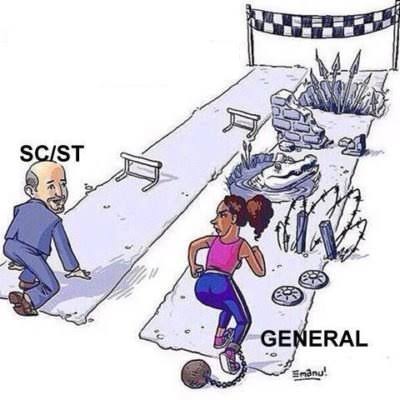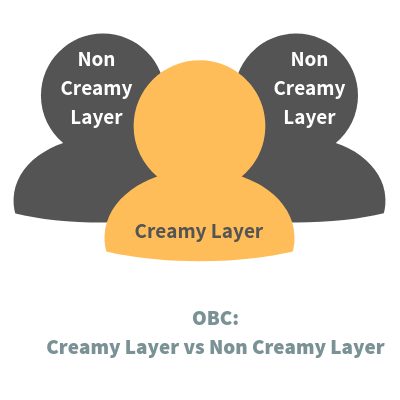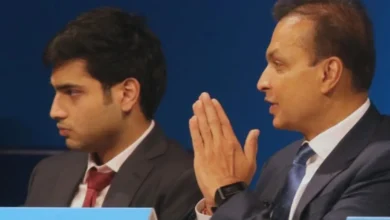OBC creamy layer revision 2021, what is creamy layer, why revision is important and contentious

The Modi government is keen on winning the favour of the OBC category. On Wednesday, the central government approved reservation for the Economically Weaker Section EWS and Other Backward Caste OBC categories within the All India Quota AIQ for National Eligibility come to Entrance Test NEET. This reservation will help the OBC and EWS categories to crack entrance examinations for government-run medical and dental colleges across the country.
Apart from this, the Modi government has included 27 OBC ministers in the new reshuffle. Five of these ministers have cabinet ministry portfolios. Experts believe that approving reservations and reshuffling; the Cabinet was done to gain electoral benefits for the upcoming elections in Uttar Pradesh. BJP barely scraped through the Bihar elections even after joining hands with JDU and Nitish Kumar to win.
Anyone who follows the news can logically deduce this. Now several demands are arising from MPs in Lok Sabha and Rajya Sabha to revise criteria that define the creamy layer among OBCs. The demand for redefining the creamy layer of OBCs have been pending for years which was raised again in the monsoon session of Parliament.
Let’s delve into how the creamy layer is defined, what led to demand for revision and how it got stuck –
What is OBC creamy layer?
The creamy layer is a threshold or a separate line that defines the reservation benefits within the OBC category. If a person is above the creamy layer line, he cannot avail of reservations for the OBC category. If he is below the creamy layer line, there are several reservation benefits available to him or her. There is a 27% quota for the OBC category in government jobs and educational institutions for higher learning.
Hence the revision of the creamy layer is a contentious, ambitious and important issue for people of the OBC category. The modification of the creamy layer will render some people benefits of reservation and deprive others of it. This is why every time a revision is demanded, criticisms and resistance pour in. It’s like trying to poke a gorilla with a stick and predict its reaction.
The second backward classes commission or Mandal commission recommended 27% reservation for socially and educationally backward classes SCEB approved and implemented on 13 August 1990. The reservation provided vacancies to SEBCs in civil posts and direct recruitment services. This move was challenged in the Supreme Court on November 16, 1922, known as the Indra Sawhney case. The Supreme Court upheld the 27% reservation, but reservation benefits will be provided only to those people who are below the creamy layer.
How is the creamy layer determined?
After the Supreme Court‘s verdict in the Indra Sawhney case, Justice R.N. Prasad, with an expert committee, created criteria that determined the creamy layer. Department of personnel and training DOPT enlisted several categories of people with certain ranks, statuses and incomes whose children were ineligible to avail OBC reservation benefits. This demarcation was made on 8 September 1993.
For children whose parents are employed in the private sector, that threshold of determining creamy layer stands at the income of eight lakh rupees per year. For children whose parents have government jobs, the threshold for determining creamy layer is based on the rank of their parents and not income. If either parent has a constitutional post, the student will fall under the creamy layer does cannot avail reservation benefits.
If either parent is directly recruited in group A if both parents are recruited in group B services, they are considered a creamy layer. If a parent working in the Government sector enters group A via promotion before the age of 40, they will be regarded as part of the creamy layer. Children of Colonels, high-ranking army officers, children of parents having similar ranks in Navy or Air Force or part of the creamy layer. Income received from agriculture or salary is not included while determining the creamy layer. The Department of personnel and training clarified this on October 14, 2004.
Was the creamy layer criteria ever revised?
The current definition of defining creamy layer is exact, which includes income as a criterion according to the DOPT as in 1993 and 2004. Minister of State for Social Justice and Empowerment Krishan pal Gurjar was asked a question about criteria that defines a creamy layer in March in Parliament. In response, he said that there is no other definition that is followed for determining the creamy layer. The DOPT says that the income limit is revised to calculate the creamy layer, and it is done periodically within three years.
Ironically the first revision was done in 2004 after 1993 from one lakh per year to 2.5 lakhs per year. Another revision happened in 2008, where the income limit was capped at 4.5 lakhs per year; another revision occurred in May 2013 and September 2017. The 2017 divisiondecided the threshold of eight lakh rupees per year. It’s 2021 now, and it’s been more than three years since a revision defining the creamy layer took place.
The Department of personnel and training DOPT is either overburdened with work or incompetent at its job. Parliament committee on welfare of OBCs headed by BJP MP Ganesh Singh highlighted in 2020 the poor work ethic followed by DOPT. He reported that the DOPT is failing on revision of income limit every three years. Such working is violating the norms set by the government themselves.
What happened that the revision of the creamy layer issue is highlighted?
In the monsoon session, 8 Lok Sabha MPs, seven from BJP and one from Congress, raised questions about the pending proposal, which revises the income criteria. Responding to the questions Minister of State for Social Justice and empowerment Pratima Bhowmik said that the proposal for revision of income limit to determine creamy layer is considered by the government.
Same questions were raised in the Rajya Sabha by three MPs, two from the Samajwadi Party and one from congress. They also raised a fundamental question that was fair and justifiable that the provision of a creamy layer for government jobs was applicable to the OBC category only.
What will the government do about the revision?
A draft was forwarded by the Ministry of Social Justice and empowerment to the NCBC, which determine the criteria for revision of the creamy layer. The draft said that determining income, including salary calculated for income tax but will exclude agricultural income. This provision of the draft was recommended by BP Sharma, who was former secretary of DOPT. He was assigned to review the implementation of DOPT instructions passed on September 8, 1993.
Naturally, several MPs who have an OBC voter base protested, which led The review task to come to a standstill. MP Ganesh Singh has requested Prime Minister Narendra Modi and Home Minister Amit Shah to exclude salary and agriculture income while calculating creamy layer.
The draft was resisted because adding salary for calculating income for creamy layer would exclude several OBC candidates from reservation benefits. If a service or a facility is provided to a community for an extended period of time, after a few years, it is viewed as their right. The government hopes to raise the income limit to 12 lakhs, including agriculture income and salary, which has attracted criticism.
What will happen now?
BJP MP Ganesh Singh, Bhupendra Yadav highlighted poor representation of the OBC community in government jobs. They also raise the issue of vacancies that were reserved for the OBC category filled by general category candidates. The government has asked the delegation to gather data and meet with the Home Minister. Delegation is yet to be given a date to meet the home ministry.




